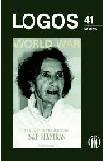VOKIEČIŲ MENOTYROS MOKYKLOS TAPSMAS: CARLAS SCHNAASE
The Development of German Art Criticism: Carl Schnaase
Author(s): Antanas AndrijauskasSubject(s): Philosophy
Published by: Visuomeninė organizacija »LOGOS«
Keywords: History of art; art criticism; Schnaase; Hegel; theory of styles
Summary/Abstract: The article is focused on the development of German art criticism in the second half of the 19th century, when the German and Austrian traditions gradually became prevalent in the West. That tradition, using its own technical instruments, historiography and interpretative elements, developed historical and theoretical models of art inherited from German romanticism and classical art philosophy. It applied inductive scientific methods to studies of art history, underlined the importance of comparative art studies and created new models of art history in which different kinds of art development follow one after the other. It gave more attention to the historical facts of development than to speculative abstract theoretical outlines. Schnaase was one of the most influential art critics of that period. He elaborated the foundations of the German school, which underlined the close connection between empirical materials and theoretical generalizations in art criticism. Schnaase consistently transferred the principles of systematic hegelian methodology of the philosophy of the spirit to the sphere of art criticism and applied them to the new problems of universal art history. In his wide panorama of world art, the signs of Eurocentrism can be traced; nevertheless, he opened some new perspectives of fruitful art analysis, which were later accepted into the methodological arsenal of Western art criticism.
Journal: LOGOS - A Journal of Religion, Philosophy, Comparative Cultural Studies and Art
- Issue Year: 2005
- Issue No: 41
- Page Range: 182-190
- Page Count: 9
- Language: Lithuanian

